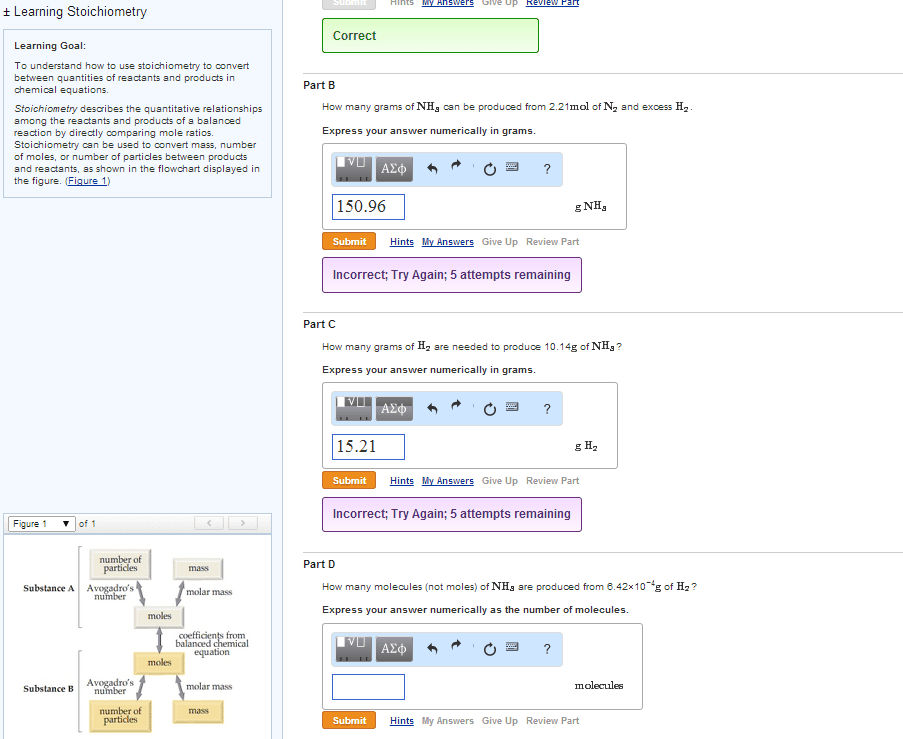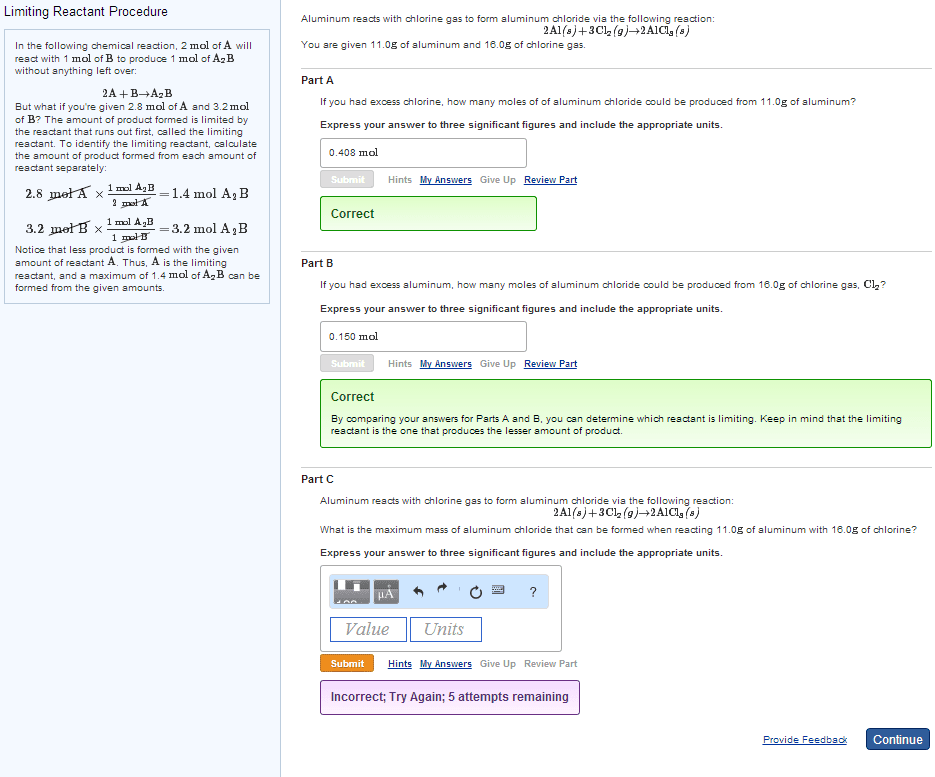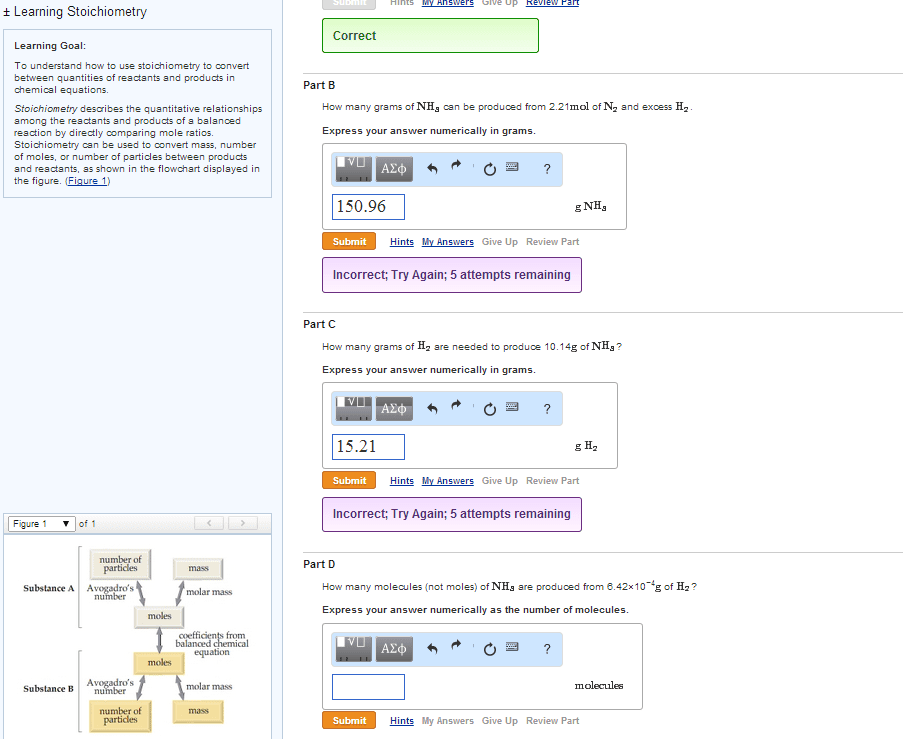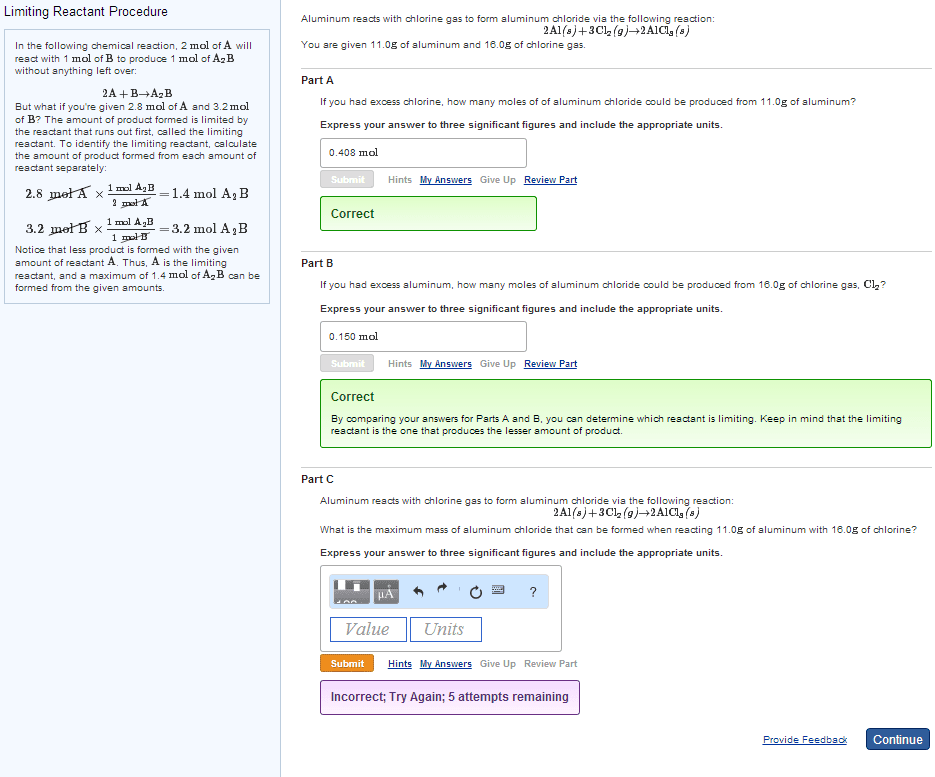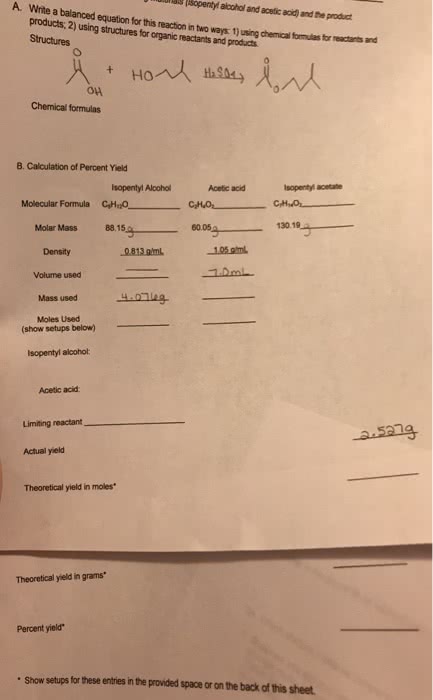CHM2045 Lecture Notes - Lecture 3: Molar Mass, Limiting Reagent, Molecular Mass
Document Summary
Predict the products of simple combination, decomposition, and combustion reactions. Convert grams to moles and moles to grams using molar masses. Convert number of molecules to moles and moles to number of molecules using. Calculate the empirical and molecular formulas of a compound from percentage composition and molecular weight. Identify limiting reactants and calculate amounts, in grams or moles, or reactants consumed and products formed for a reaction. Stoichiometry is the study of the quantitative relationships in substances and their reactions. Chemical equations: a chemical equation is a shorthand notation to describe a chemical reaction. Just like a chemical formula, a chemical equation expresses quantitative relations: subscripts tell the number of atoms of each element in a molecule, coefficients tell the number of molecules. Hydrogen and oxygen can make water or hydrogen peroxide. Reactants appear on the left side of the equation. Products appear on the right side of the equation.


